Seminar Blogs
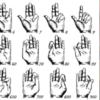
“‘Fingerprints’ from Analogue Counting to Touch-Base Interfaces” – Laura Jimenez Rojas
An apparent oxymoron was brought to the TiM seminar: tangible mathematics. Nathalie Sinclair introduced an interesting connection between embodied cognition in mathematics and digital technologies. Currently, she is working on the development of a multimodal app that helps young learners to expand the faculty of number sense. Sinclair alluded to the concept of multiplication as…
Read more
“An enactive approach to learning” – Gido Broers
Initially, it was difficult to understand exactly what Nathalie Sinclair was talking about in her seminar, which was called “Multiplication as Experience: Whitehead, aesthetics and gesture-based, touchscreen technology”. It took some time before I realized that the educational tool that Sinclair proposed – TouchTimes, a touchscreen application with which young children practice the skill of…
Read more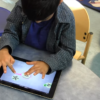
“What Is the Role of Digital Play in the Future of Education?” – Dennis Jansen
The question that makes the title of this post is one that has been around for quite a while. Already in 2003, when the field of game studies was only just beginning to find its feet, James Paul Gee wrote What Video Games Have to Teach Us about Learning and Literacy, and many teachers and…
Read more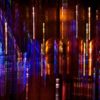
“The Museum as a Constructed, Performative Space” – Mavi Irmak Karademirler
Sarah Bay Cheng’s talk “Everybody’s Historiography: History, Performance, and Playing the Digital in Museum” pointed out to several ways of approaching the digital history, which could be examined around a performance spectrum. Drawing mainly from her experience in the POLIN Museum in Warsaw, Bay-Cheng highlighted some of the critical issues arise with the digitisation of…
Read more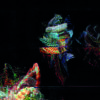
“The authenticity of documents and strawberry flavour.” – Jose Hopkins Brocq
When reflecting upon the potentials of mixed realities, we can’t avoid wondering about the possibilities and implications it may have; not only in our relationship to the world but also how the world will react and change. Shifting our gaze beyond ourselves into non-human rhythms and languages could bring into appearance a series of alien…
Read more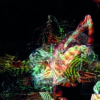
“An interactive approach to history” – Gido Broers
Sarah Bay-Cheng, who is an excellent speaker, explained in her seminar “Everybody’s Historiography: When Museums Play Digital Games” how museums nowadays use digital and interactive elements in their exhibitions to make the visitor more than just a passive voyeur who perceives a representation of a certain historical event ‘as it is’. Instead, the visitor is…
Read more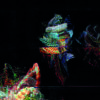
“The Museum between the Physical and the Virtual” – Dennis Jansen
One of the major themes in Sarah Bay-Cheng’s recent lecture on “History, Performance, and Playing the Digital in Museums” was the use of mixed reality in modern museums; that is, the blending of physical artefacts and set pieces with digital interfaces, screens and games. She argued that, as museums engage increasingly often with digital technologies,…
Read more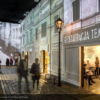
“Walking Through The Jewish Street: A Digital Co-Creation Of history (ies)” – Laura Jimenez Rojas
Nowadays museums are exploring new ways of communication. Digital technologies are opening new paths of experiences within museum spaces. Interactivity and multidirectional participation are being enhanced by the incorporation of digital technologies. As technologies change, so should the practices around them. Sarah Bay-Cheng invited us to see a new perspective on the relationship amongst museums,…
Read more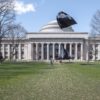
“Experience is an Ongoing Testing” – Laura Jimenez Rojas
What does it mean to go beyond representation when we think about atmosphere? Is not atmosphere a “celestial body” composed of nitrogen, oxygen and argon as described by science? Derek McCormack invited us to think of atmosphere beyond this scientific approach to nature. He invited us to think of atmosphere as an elemental medium to be experienced,…
Read more
“On Game Controllers, and the Magic Circle as an Atmosphere” – Dennis Jansen
When we engage with/in games, there emerges a certain atmosphere around us: a bounded area in which gameplay occurs, a space of ludic ritual wherein the fiction of the game is the dominant framework for meaning-making, a “magic circle” (Salen and Zimmerman 2003, 95). Specifically for digital games, this metaphoric space is constituted by the…
Read more
